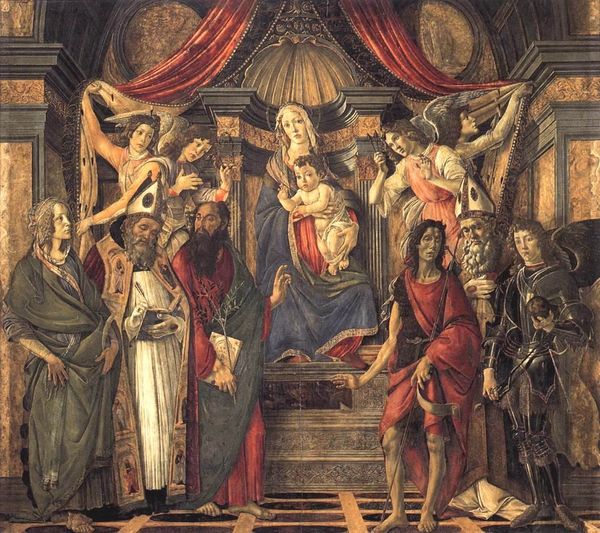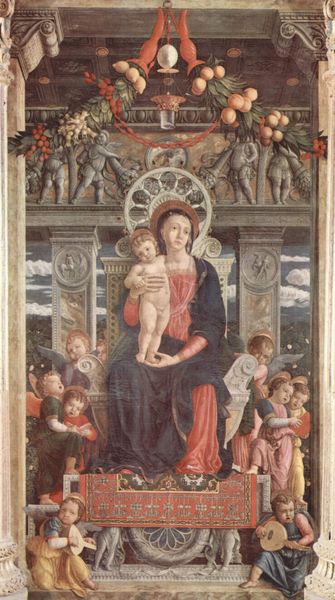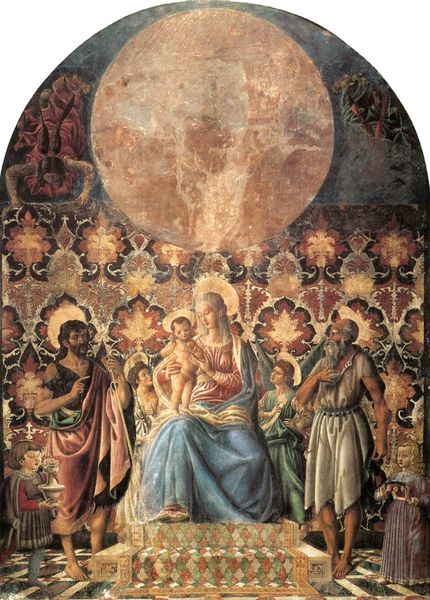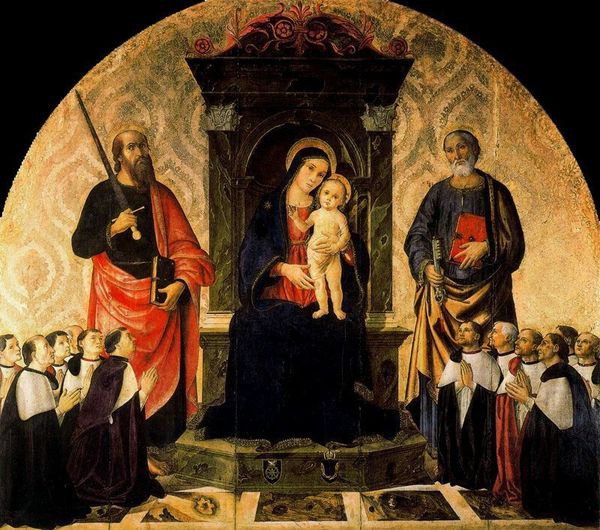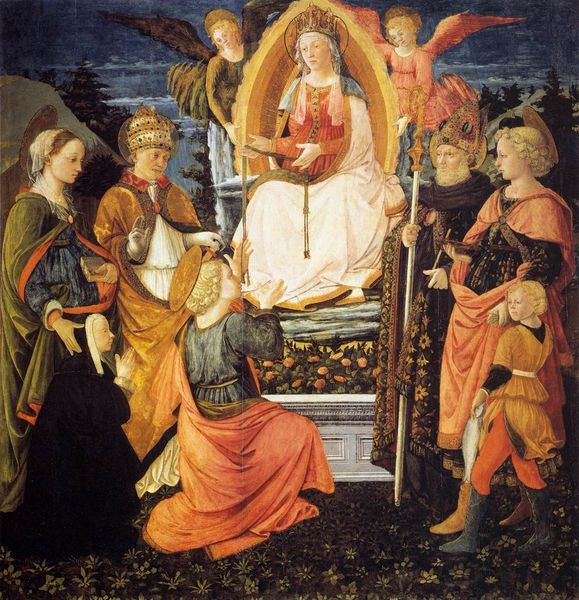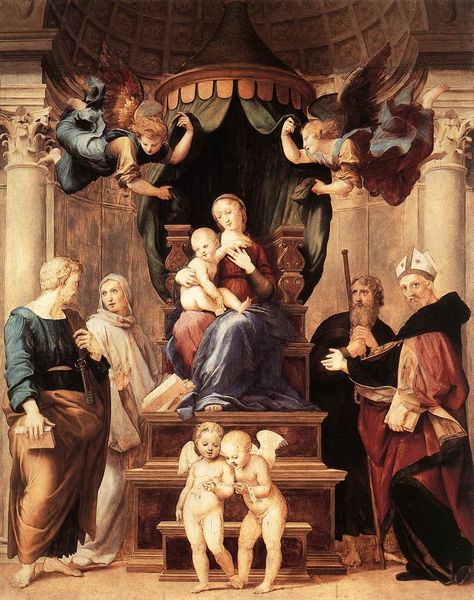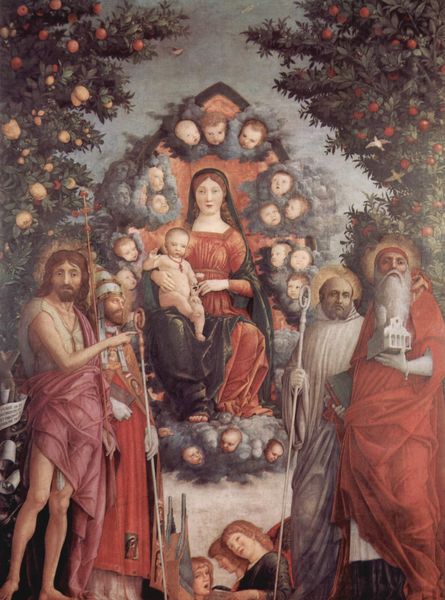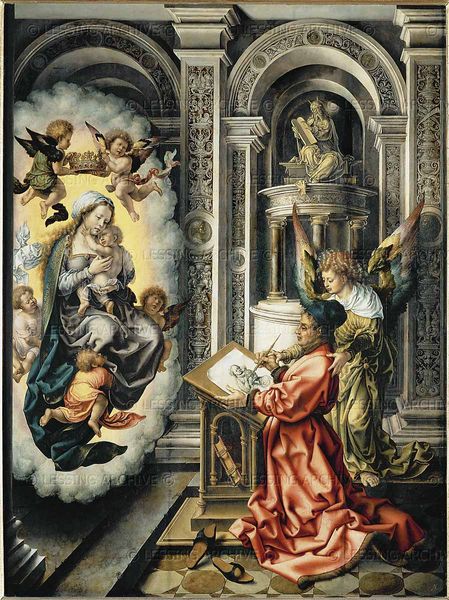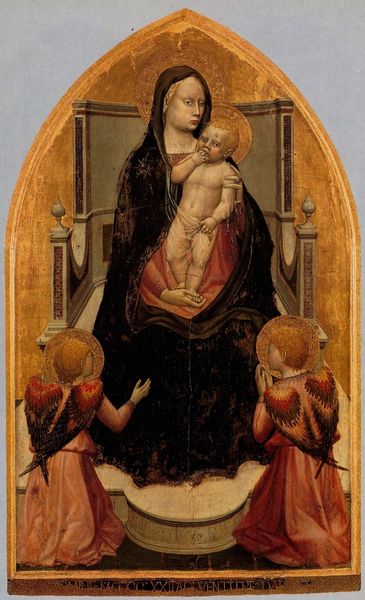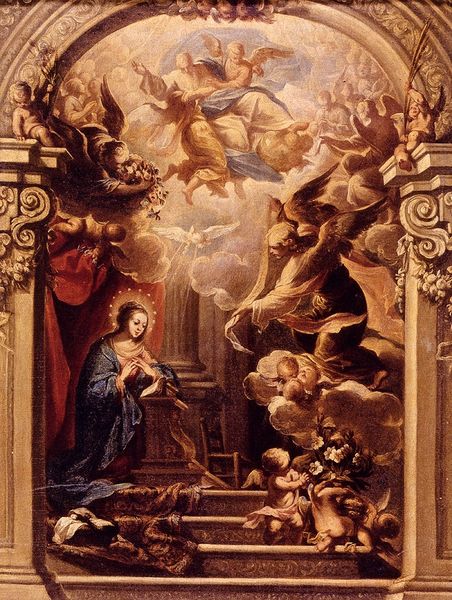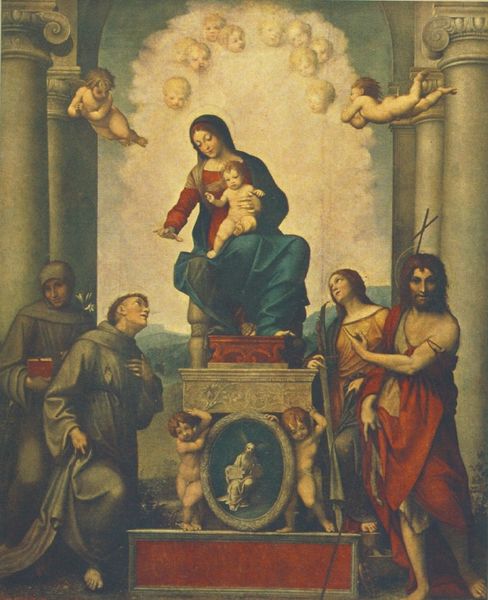
The Virgin of Victory (The Madonna and Child Enthroned with Six Saints and Adored by Gian Francesco II Gonzaga) 1496
0:00
0:00
painting, oil-paint
#
portrait
#
high-renaissance
#
painting
#
oil-paint
#
sculpture
#
holy-places
#
figuration
#
11_renaissance
#
child
#
christianity
#
history-painting
#
italian-renaissance
#
christ
Dimensions: 168 x 285 cm
Copyright: Public domain
Curator: What strikes you first about Andrea Mantegna's "The Virgin of Victory" completed around 1496, currently housed in the Louvre? Editor: There's an almost theatrical, staged quality. The figures seem deliberately positioned, like actors waiting for their cues. And the garland above, heavy with fruit, gives it such an…operatic grandeur. Curator: It is theatrical, isn’t it? Mantegna was consciously drawing on classical stage design. But more than theatre, this composition is steeped in Marian symbolism, designed to convey particular meanings to the viewer. Think about it. Editor: Right. The garland, bursting with citrus fruits, signifies, among other things, the sweetness and abundance of divine grace, doesn’t it? I am curious about that figure kneeling in armor. Who is that? Curator: That is Gian Francesco II Gonzaga, the commissioner of the work, and at the time, the ruler of Mantua. Mantegna painted this piece as an ex-voto for Gonzaga's recovery from a serious illness, commissioned to hang in the church of Santa Maria della Vittoria in Mantua. Editor: An offering of thanks made into public art... It does speak to how art functioned then. Not merely decorative, but powerful votive statements connected to societal health. Are the saints around Mary linked to healing too? Curator: Absolutely. Consider Saint Michael, often associated with protection and healing. His prominent placement beside Gonzaga visually links the ruler to divine protection and salvation. This iconography isn't just pretty; it serves to publicly underscore the Duke’s devotion and, perhaps more subtly, to legitimize his rule through perceived divine favor. Editor: So the placement of each figure, each piece of fruit, they all tell a piece of that very precise story, cementing meaning but also solidifying Gonzaga's place within it all. I find myself re-evaluating what I first considered ‘theatrical’. Now, it reads as strategically communicative. Curator: Indeed. Mantegna here shows the complex relationship between patron, painter, and public perception that dictated so much Renaissance art. It serves as a powerful emblem of social values. Editor: It's amazing to consider how artworks can transcend mere aesthetics to become mirrors reflecting a society’s core beliefs and power dynamics. Curator: Precisely! This particular piece serves to demonstrate cultural memory by reminding its contemporary viewer the importance of recovery and victory.
Comments
No comments
Be the first to comment and join the conversation on the ultimate creative platform.
